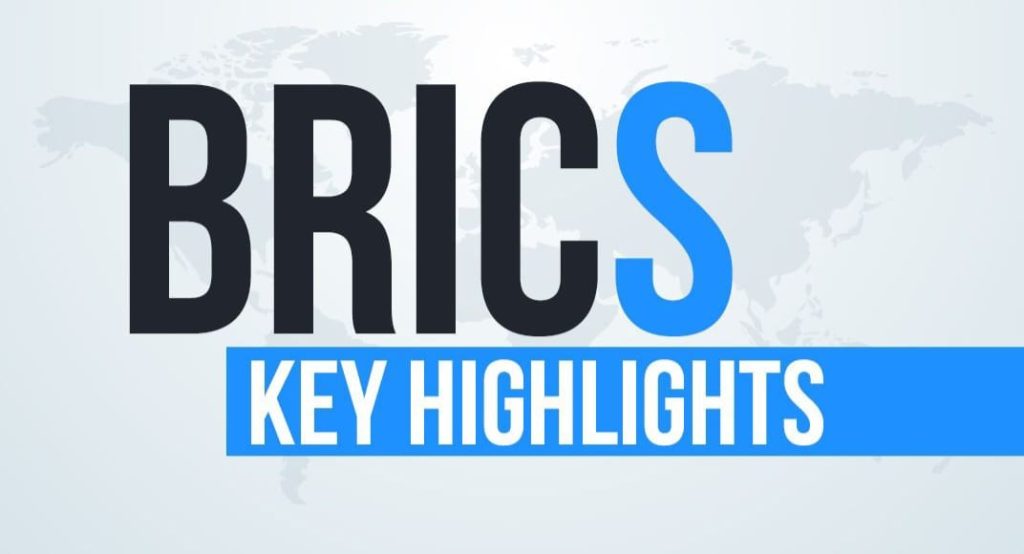History of BRICS:
-
- Formation: The idea of BRICS originated in 2001 when economist Jim O’Neill coined the term “BRIC” (Brazil, Russia, India, and China) to represent emerging markets. In 2006, these four countries began formal diplomatic coordination.
- Key Goals and Cooperation: BRICS aims to promote economic growth, enhance cooperation on global governance, reform financial institutions like the IMF and World Bank, and reduce Western dominance in global affairs.
- First BRIC Summit (2009): The first official BRIC summit took place in Yekaterinburg, Russia, focusing on reforming global financial institutions, addressing economic challenges, and advocating for a multipolar world.
- Inclusion of South Africa (2010): South Africa was invited to join in 2010, officially transforming BRIC into BRICS. This inclusion expanded the group’s influence on the African continent.
- New Development Bank (2014): BRICS launched the New Development Bank (NDB) in 2014, headquartered in Shanghai, China, to finance infrastructure projects in member countries and other developing nations.
- BRICS Member Countries: Brazil, Russia, India, China, South Africa. Joined in 2024 – Saudi Arabia, Egypt, Ethiopia, Iran, UAE.
- BRICS President: The current President of the BRICS New Development Bank (NDB) is Dilma Rousseff. She took office in March 2023, succeeding Marcos Troyjo. Rousseff, the former President of Brazil (2011–2016), leads the NDB in its mission to finance infrastructure and sustainable development projects within BRICS countries and other emerging economies.
New Development Bank:
-
- The New Development Bank (NDB), also known as the BRICS Bank, was established in 2014 by the BRICS countries to support infrastructure and sustainable development projects.
- It was created as an alternative to existing financial institutions like the World Bank and the International Monetary Fund (IMF), with a focus on promoting balanced economic development in emerging economies.
- BRICS Currency: BRICS currency is a proposed currency as an alternate to the US Dollar. At the recent Kazan Summit of BRICS, a bank note was showcased consisting of the flags of the member countries.
Key outcomes of the Kazan Declaration 2024:
-
- Global Governance and Multilateralism: Committed to collaborating on reforms for a more inclusive International Financial Architecture.
Economic Cooperation:
-
-
- BRICS Cross-Border Payment System: Focuseing on reducing trade barriers with non-discriminatory access and encouraging the use of local currencies.
- BRICS Clear Depositary: Establishing an independent cross-border settlement and depositary infrastructure.
- BRICS Interbank Cooperation Mechanism (ICM): Aimed at promoting innovative financial practices and facilitating local currency financing for projects and programs.
- BRICS Grain Exchange: Proposed by Russia, this platform would serve as a BRICS-based commodities trading platform, focusing on grain.
-
Other Initiatives:
-
-
- BRICS R&D Vaccine Center & Integrated Early Warning System: To support vaccine research and provide early warnings for potential infectious disease outbreaks.
- Big Cats Conservation: Recognised India’s initiative to establish the International Big Cats Alliance.
- BRICS Partner Country: Approved the creation of a BRICS Partner Country category (non-full members), adding 13 new partner countries, including Cuba, Turkey, and Vietnam.
-


